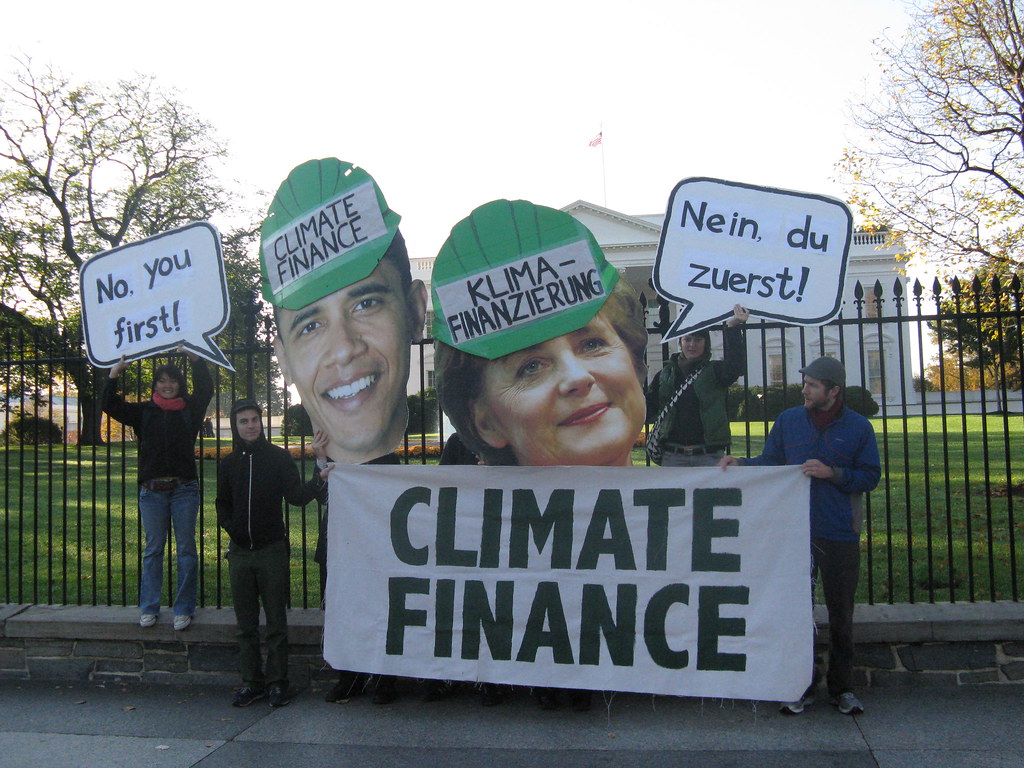The principle of common but differentiated responsibilities boils down to which countries should spend on climate finance and how much they should spend. As a whole, the global community has spent no where near the level it should be spending on adaptation and mitigation.

Estimated yearly adaptation cost is US$8 billion to US$100 billion per year by 2030. Within the same time frame, mitigation cost is about US$650 billion a year (IIED briefing: Billions at stake in climate finance). Those numbers, high as they seem, recently have been considered underestimation. In contrast, the total committed fund since 2002 under the Kyoto Protocol is just over US$18 billion, out of which only US$1 billion has been disbursed. That is 1/750 of what is needed per year. With all the news about advancement in climate finance, and all the discussion going on at COP15 about this topic, the statistic is simply unbelievable.
Sources of funding for climate finance include: public finance, private finance and international funds (including Adaptation fund, other UNFCCC funds, GEF fund, etc.). International funds come mainly from committed fund from wealthy countries. As a result, public finance and private finance take most of the responsibilities for meeting financing needs. If wealthy countries contribute 0.5 to 1% of their GDPs, the sum would be US$200 billion o US$400 billion. Private sector has even more resources to invest in climate-related projects.
With the current stage of development, even if any commitment is made at COP15, climate finance as a sector has a long way to go before it can meet global demand for funding of adaptation and mitigation. A few questions remain: Will wealthy countries be willing to commit 1% of their GDP? Will the climate finance products innovate fast enough? Do receiving countries have the capacity to absorb the massive funding and make good use of it?

Tags: adaptation, Adaptation Fund, Climate Finance, COP15 Resources, Financing, GEF, Luan Nguyen, mitigation